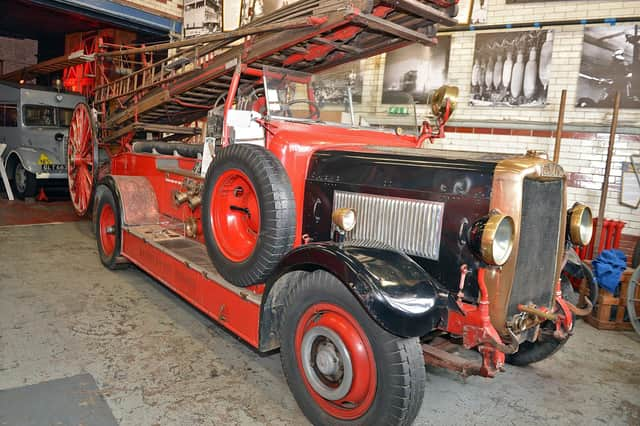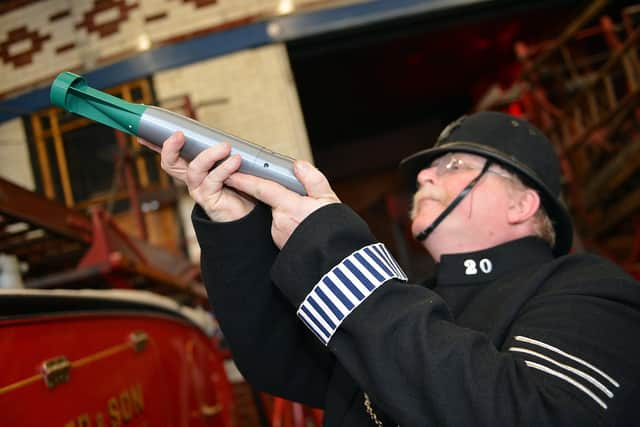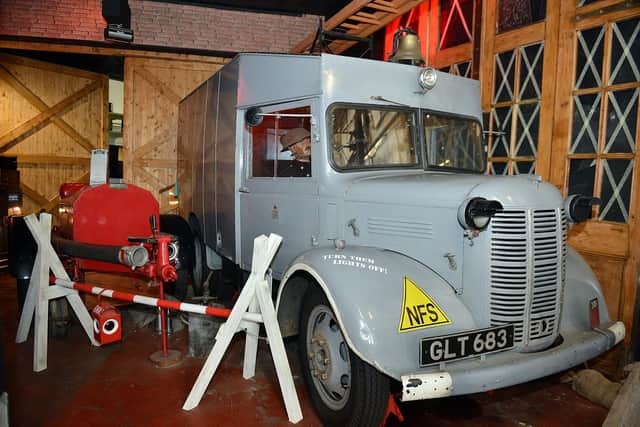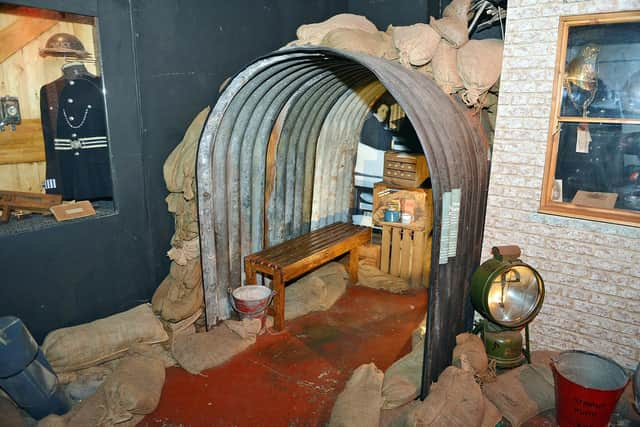Impact of the Blitz on Sheffield remembered at the city’s National Emergency Services Museum


A dedicated exhibition at the museum tells the story of the raids and shares the experiences of some of those caught up in the bombing, including first-hand audio accounts from the last surviving Sheffield firefighter to serve in the city’s Blitz.
Using lights, smoke, smells and sounds, such as the iconic wail of the air raid siren, the exhibition brings history to life through an immersive experience that also includes a mock-up of a bombed house, alive with flame, and an original Anderson air raid shelter.
Advertisement
Hide AdAdvertisement
Hide AdThe aim, says NESM chief executive Matt Wakefield, is to bring visitors as close as possible to the atmosphere of the Blitz.


"In many ways we’re perfectly placed to tell the story of the Sheffield Blitz’, Matt said.
"Firstly the war had such a huge impact on the emergency services, who played a major and often heroic role during the raids, that it’s impossible to talk about their history without acknowledging their efforts in the Blitz.
"Secondly our building itself has its own war story. At the time it was still a working police station. From here police officers set out to help those caught up in the bombing, often putting their own lives at risk.
Advertisement
Hide AdAdvertisement
Hide Ad"The city’s emergency communications were housed in our cells to try to keep them safe from attack, and the police garage was damaged by a German bomb.


" The front of the building is littered with shrapnel damage; people think that it’s just worn away bricks but it’s actually war wounds.”
As well as sharing the sights and sounds of the raids the exhibition showcases original objects and vehicles with their own Blitz stories to tell. Among the star attractions is a 1938 Leyland fire engine which belonged to Barnsley Fire Brigade.
In December 1940, as Sheffield burned and the city’s emergency services struggled to cope, reinforcements flooded in from neighbouring towns and cities.
Advertisement
Hide AdAdvertisement
Hide AdAmong them were firefighters from Barnsley aboard that very Leyland engine; now preserved by NESM as the last surviving fire engine to have served in the Sheffield Blitz.


Other objects pay tribute to the army of men and women who volunteered for the Auxiliary Fire Service (AFS), later the National Fire Service (NFS), finding themselves on the front line during bombing raids.
One vehicle on display, a 1941 Austin K2, served with the NFS and the exhibition also includes examples of kit and clothing.
Among the personal items on display are the helmet and commemorative scroll belonging to police fireman F. P. Spencer, who lost his life during the raids.
Advertisement
Hide AdAdvertisement
Hide AdA fire watcher’s shelter, which once sat on the roof of the Sheffield Twist Drill Co., is also part of the exhibition. The shelter, which is just big enough for one person, would have been the only protection during a raid for those tasked with the dangerous job of extinguishing incendiary bombs.
Visitors can climb inside to get an idea of how it might have felt to shelter there as the bombs fell around them.
The exhibition, which was funded by a grant from the then-Heritage Lottery Fund as part of the larger ‘Blitz 75’ project, opened in 2017 and has proved a popular attraction for visitors.
However it’s just one of the ways that the museum ensures the experiences and memories of the war are not lost.
Advertisement
Hide AdAdvertisement
Hide AdJust around the corner from the Blitz exhibition another display tells the story of the ambulance service and the role of the Air Raid Precaution (ARP) workers who helped save the lives of those injured by bombing.
A mock ARP shelter, complete with maps and first aid kit, gives an insight into the work of this indispensable army of volunteers who did so much to help those caught up in the raids and who, sadly, sometimes lost their lives.
The museum also plays a role in taking the history and experiences of the Blitz out to a wider audience. A schools’ workshop dedicated to World War II helps youngsters discover life on the home front, the effects of raids on Sheffield and how the emergency services coped with help from the civilian population.
Students also come face to face with an incendiary bomb and handle original artefacts from the museum’s wartime collection.
Advertisement
Hide AdAdvertisement
Hide AdThen there is NESM’s Wartime Christmas weekend, usually one of the highlights of the museum’s year. This two-day event brings together living history displays, reenactors, hands-on history, vintage displays and music to give visitors a taste of life in a city at war.
Mr Wakefield said: “Our Christmas event this year was scheduled for the weekend of 12 and 13 December - 80 years exactly since the first night of the Sheffield Blitz.
"We were planning to mark the anniversary in a special way this year but, sadly, the event has been cancelled due to the Covid outbreak. But it will be back bigger and better than ever next year.
"Even though we’ve not been able to mark the anniversary this year as we would have liked, we’re proud to do our bit to preserve and share the history of the Sheffield Blitz.
Advertisement
Hide AdAdvertisement
Hide Ad"For those caught up in it, it was a terrible and unforgettable experience. We have a duty to make sure those memories aren’t forgotten.’
The museum is closed until 2021. Find out more at www.visitnesm.org.